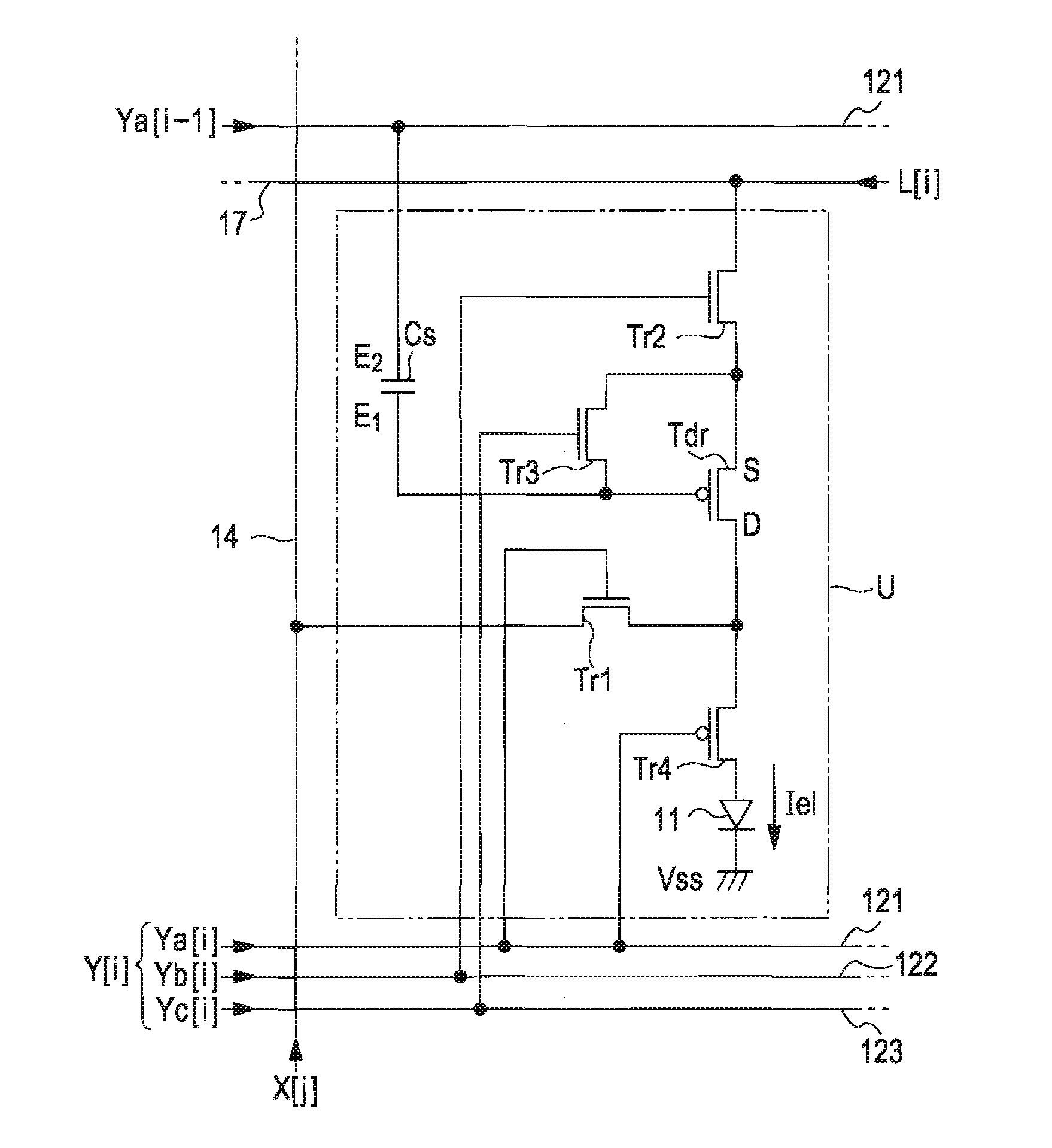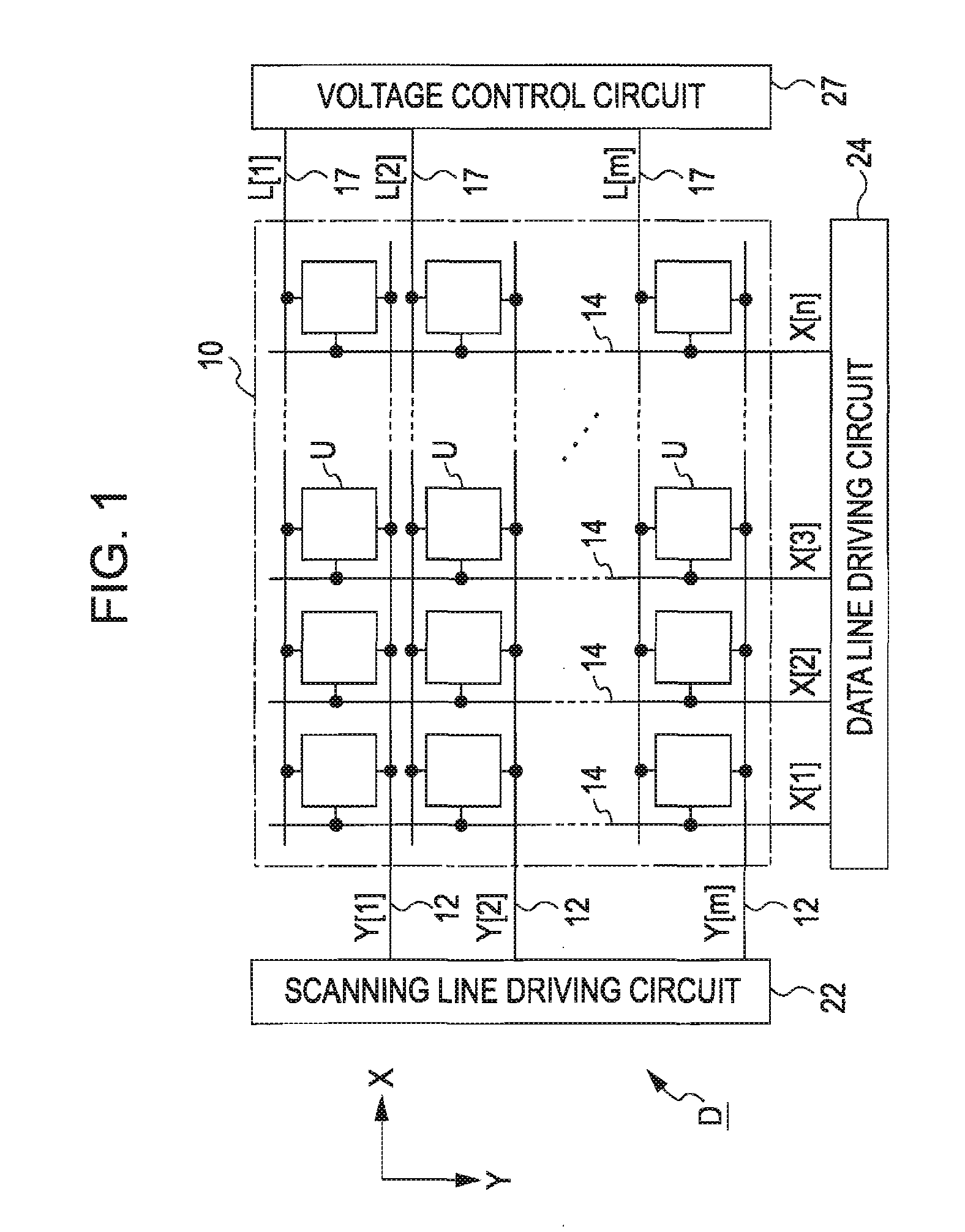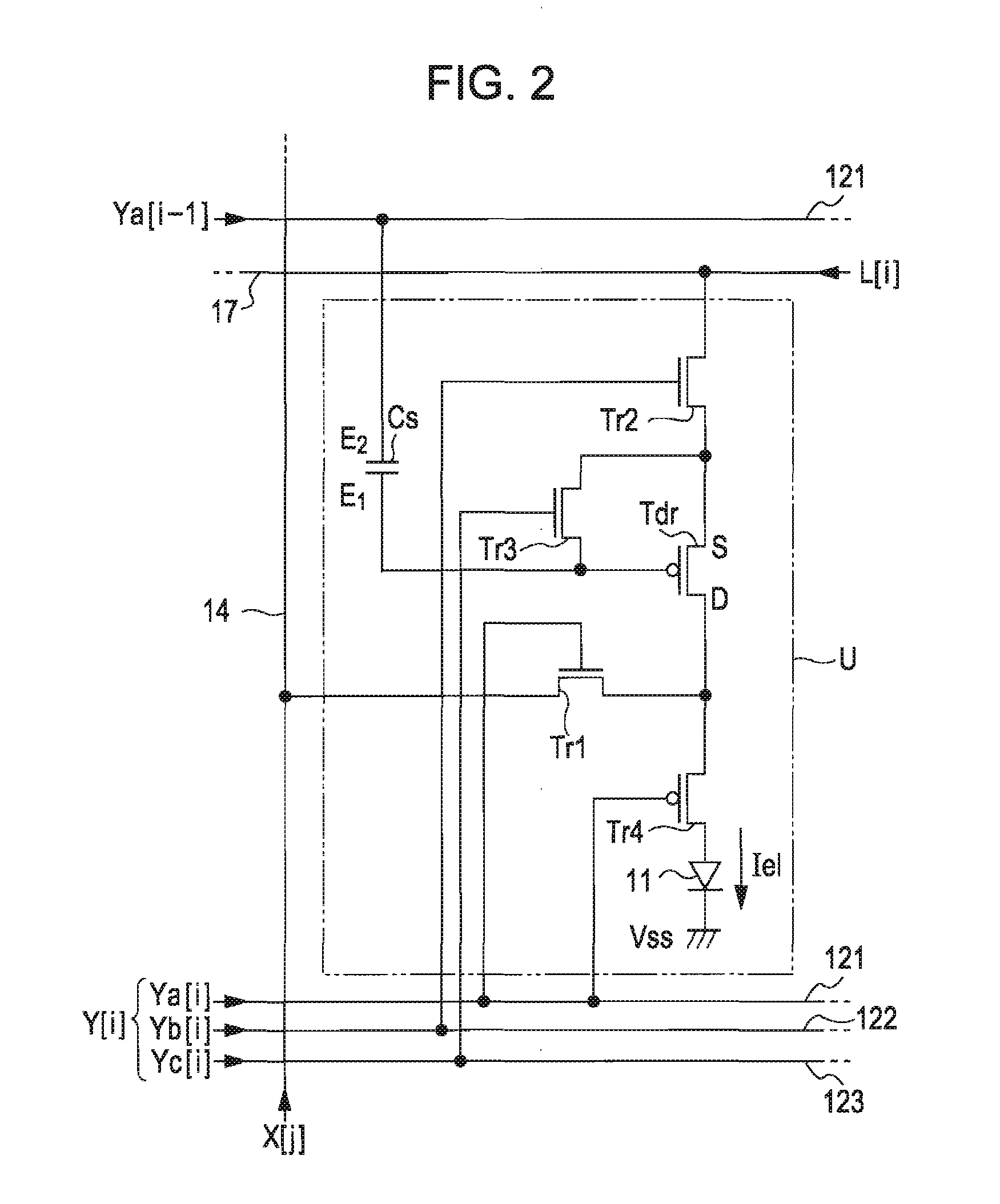Electronic device, method of driving the same, electro-optical device, and electronic apparatus
a technology of electro-optical devices and electronic devices, applied in the direction of instruments, static indicating devices, etc., can solve the problems of reducing the aperture ratio, and complicated configuration of the unit circui
- Summary
- Abstract
- Description
- Claims
- Application Information
AI Technical Summary
Benefits of technology
Problems solved by technology
Method used
Image
Examples
first embodiment
[0060]FIG. 1 is a block diagram showing the configuration of an electronic device according to a first embodiment of the invention. An electronic device D of FIG. 1 is an electro-optical device that is used in various electronic apparatuses as a unit for displaying images. The electronic device D includes an element array portion 10a, in which a plurality of unit circuits U are arranged in a planar manner, a scanning line driving circuit 22 and a data line driving circuit 24 that drive the individual unit circuits U, a voltage control circuit 27 that controls potentials to be supplied to the individual unit circuits U.
[0061] As shown in FIG. 1, in the element array portion 10, m scanning lines 12 extending in an X direction, m potential supply lines 17 extending in the X direction to be in pairs with the scanning lines 12, n data lines 14 extending in a Y direction perpendicular to the X direction are formed (where m and n are natural numbers). The unit circuits U are corresponding...
second embodiment
[0099]FIG. 8 is a block diagram showing the configuration of an electronic device according to a second embodiment of the invention. The electronic device D shown in FIG. 8 is an electro-optical device that is used in various electronic apparatuses as an image display unit. The electronic device D includes an element array portion 10 having a plurality of unit circuits U that are arranged in a planar manner, a scanning line driving circuit 23 and a data line driving circuit 25 that drive each of the unit circuit U, and a voltage control circuit 27 that controls a voltage to be supplied to each of the unit circuits U.
[0100] As shown in FIG. 8, in the element array portion 10, m scanning lines 13 extending in the X direction, m voltage supply lines 17 extending in the X direction to be in pairs with the scanning lines 13, n data lines 15 extending in the Y direction perpendicular to the X direction are formed (where m and n are natural numbers). The unit circuits U are correspondingl...
third embodiment
[0130] Next, an electronic device D according to a third embodiment of the invention will be described. Moreover, in this embodiment, the same parts as those in the second embodiment are represented by the same reference numerals, and the descriptions thereof will be omitted.
[0131]FIG. 15 is a circuit diagram showing the configuration of the unit circuit U according to this embodiment. As shown in FIG. 15, in this embodiment, the conductivity type of the driving transistor Tdr is a p-channel type. The electro-optical element 11 is connected to the drain (D) of the driving transistor Tdr. Moreover, like the second embodiment, each of the terminals of the driving transistor Tdr is switched from one of the source and the drain to the other, but, in this embodiment, for convenience of explanation, the terminal close to the electro-optical element 11 is represented by ‘drain’ and the opposing terminal is represented by ‘source’.
[0132] A transistor Tr1 that controls an electrical connec...
PUM
 Login to View More
Login to View More Abstract
Description
Claims
Application Information
 Login to View More
Login to View More - R&D
- Intellectual Property
- Life Sciences
- Materials
- Tech Scout
- Unparalleled Data Quality
- Higher Quality Content
- 60% Fewer Hallucinations
Browse by: Latest US Patents, China's latest patents, Technical Efficacy Thesaurus, Application Domain, Technology Topic, Popular Technical Reports.
© 2025 PatSnap. All rights reserved.Legal|Privacy policy|Modern Slavery Act Transparency Statement|Sitemap|About US| Contact US: help@patsnap.com



